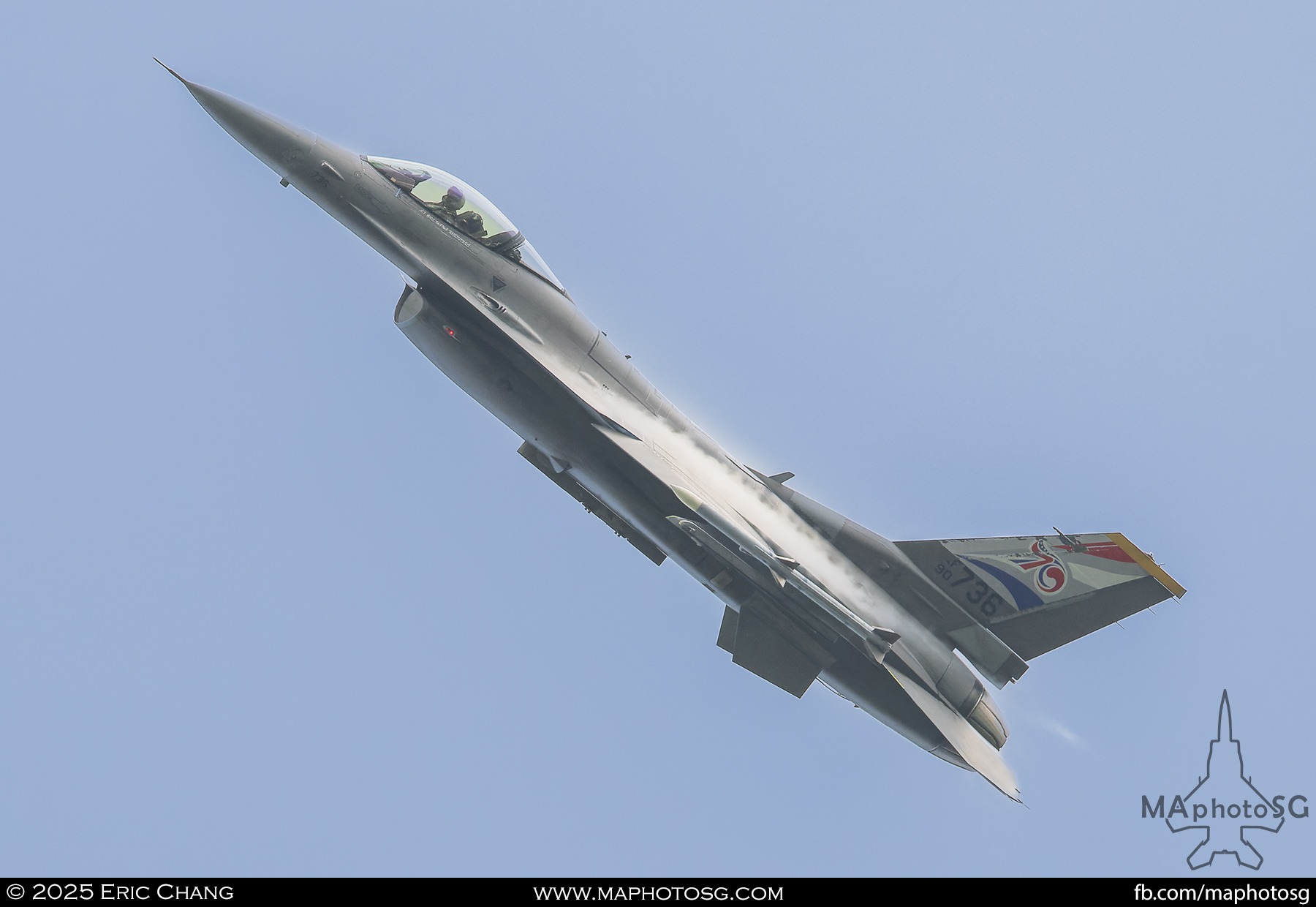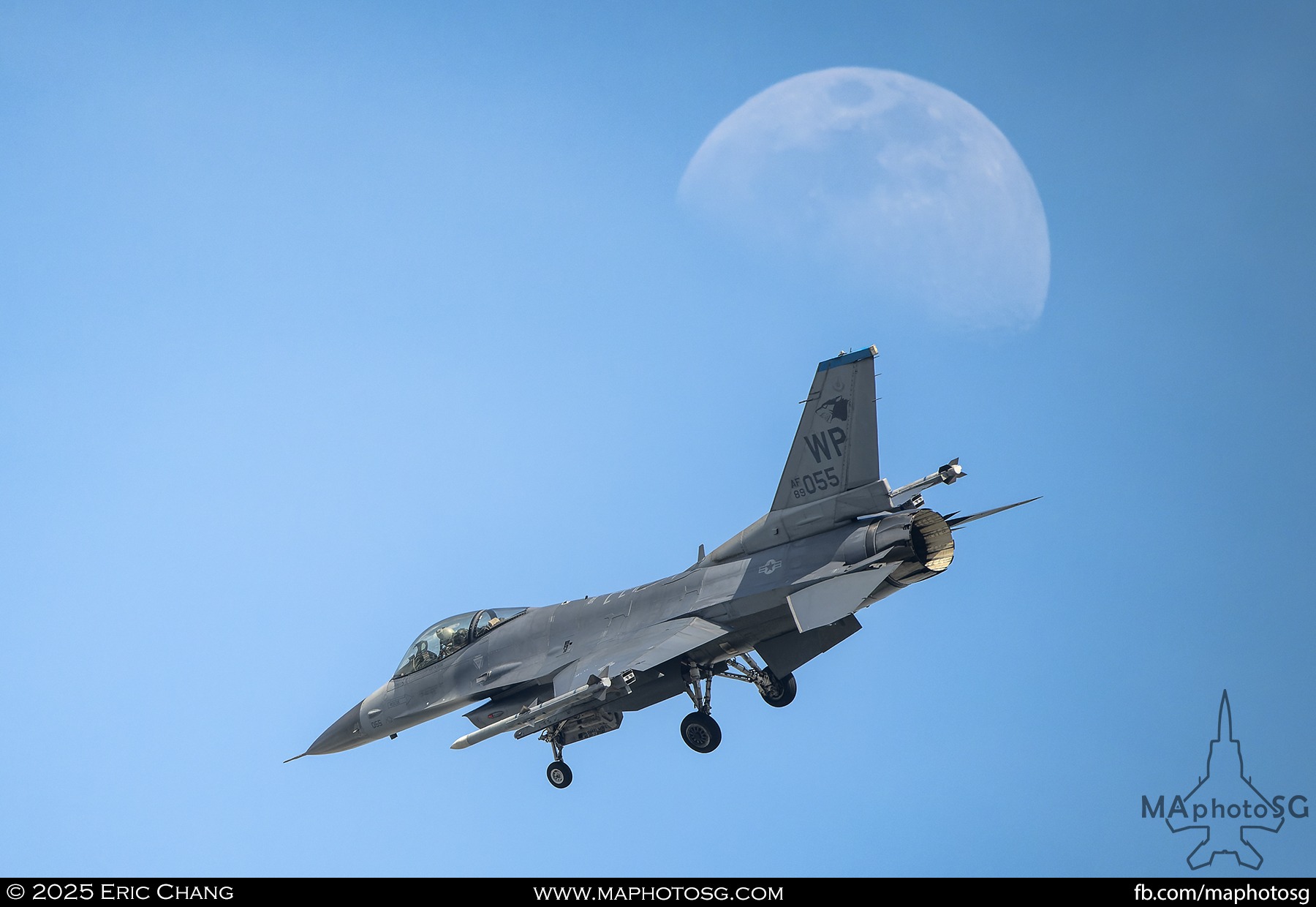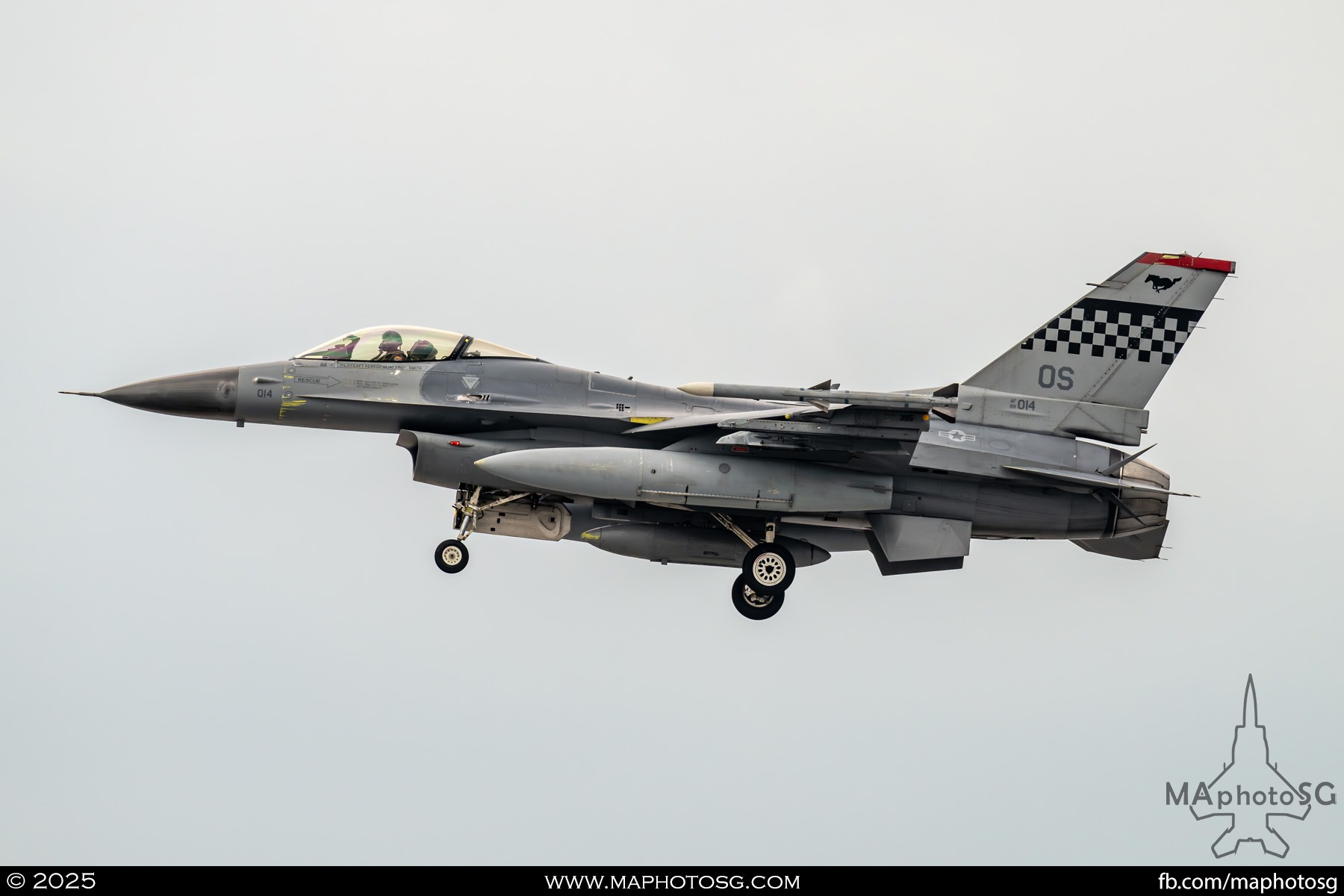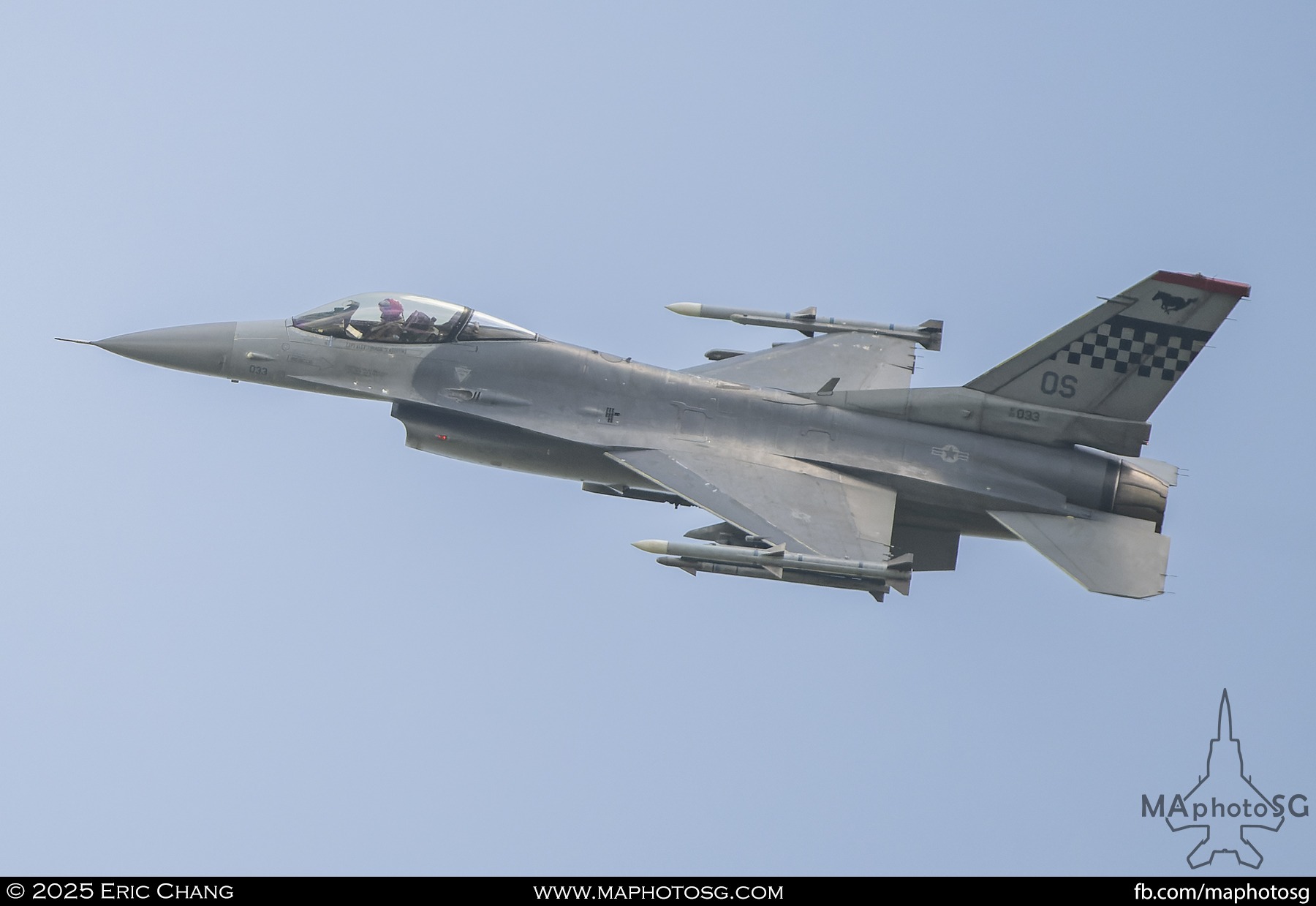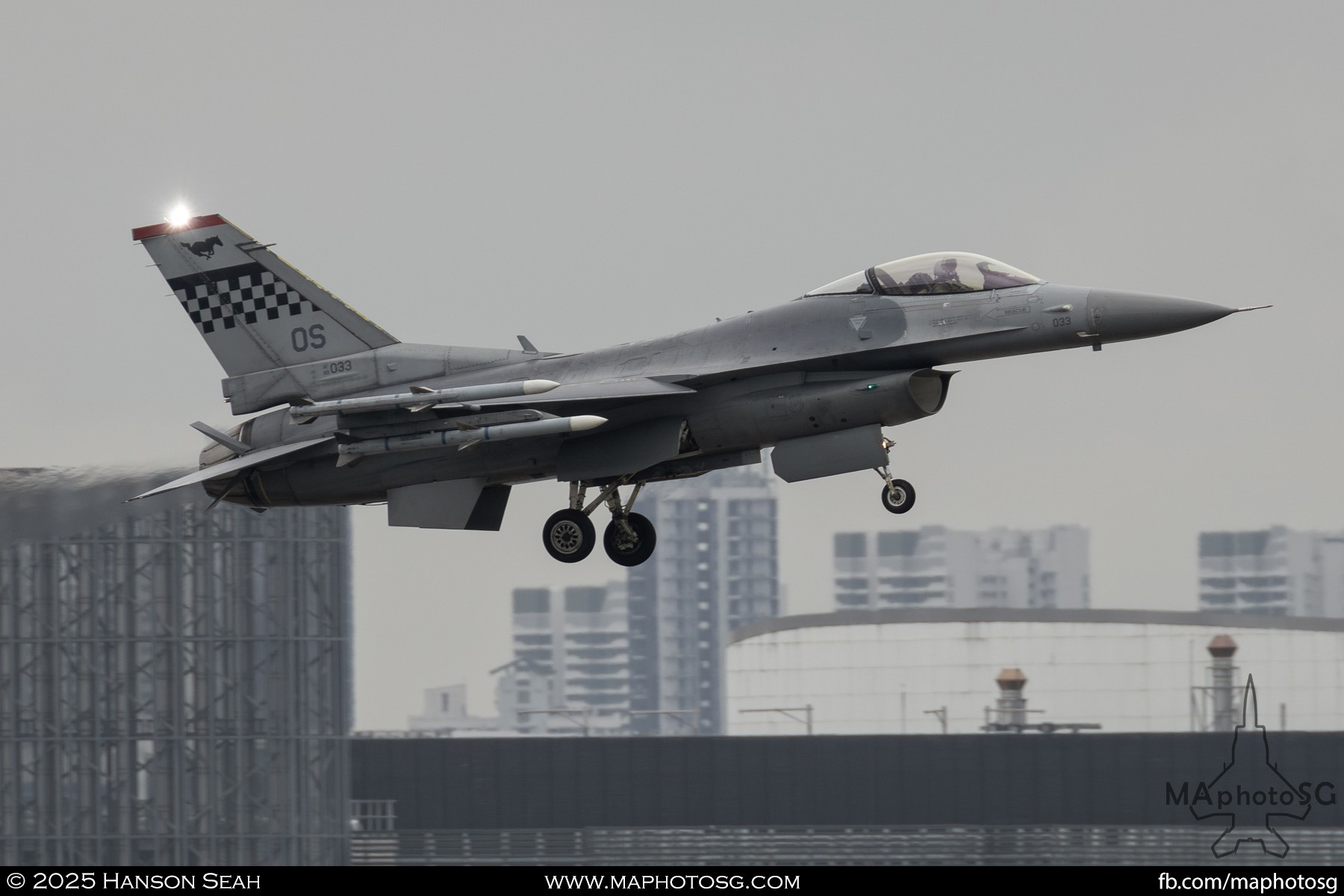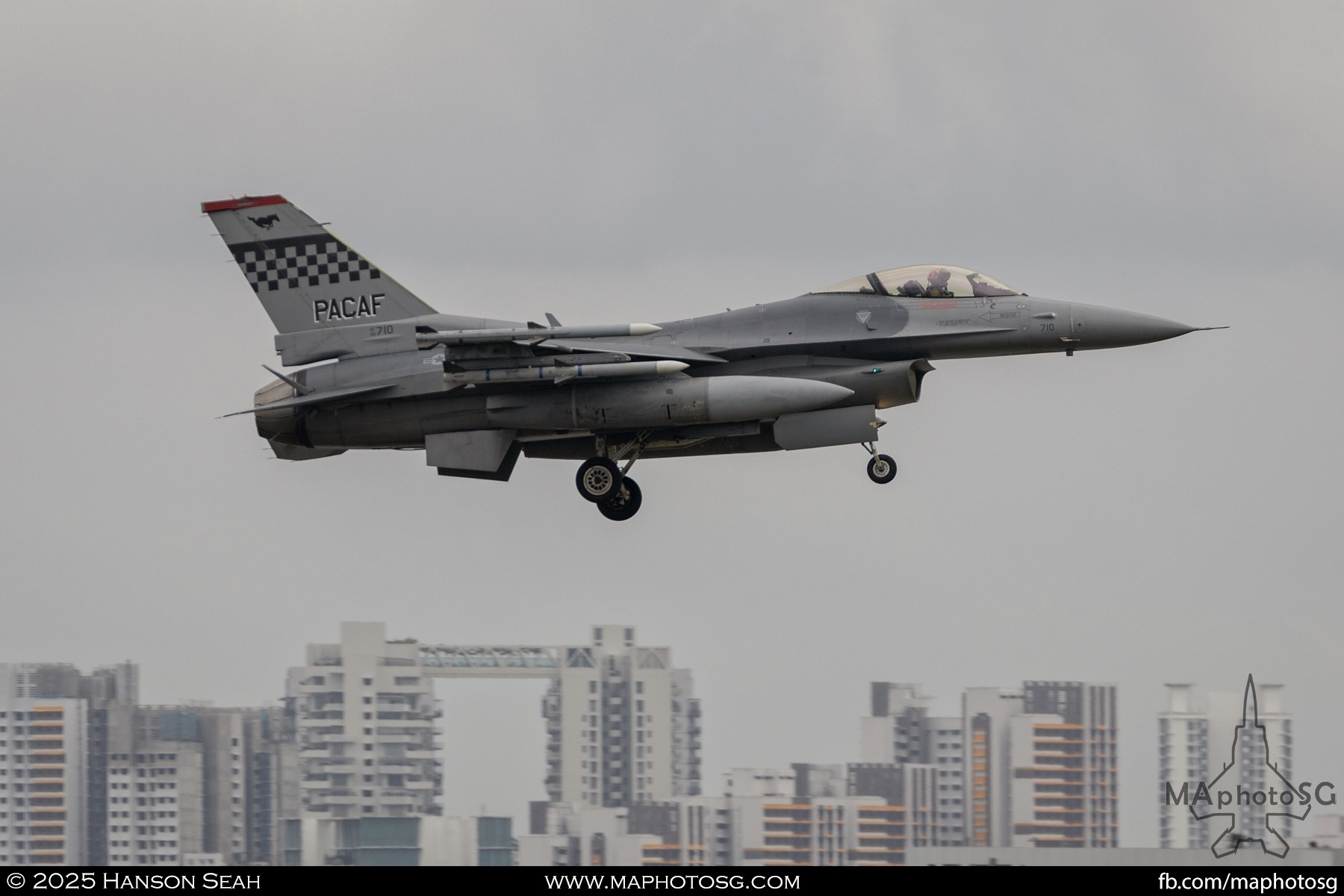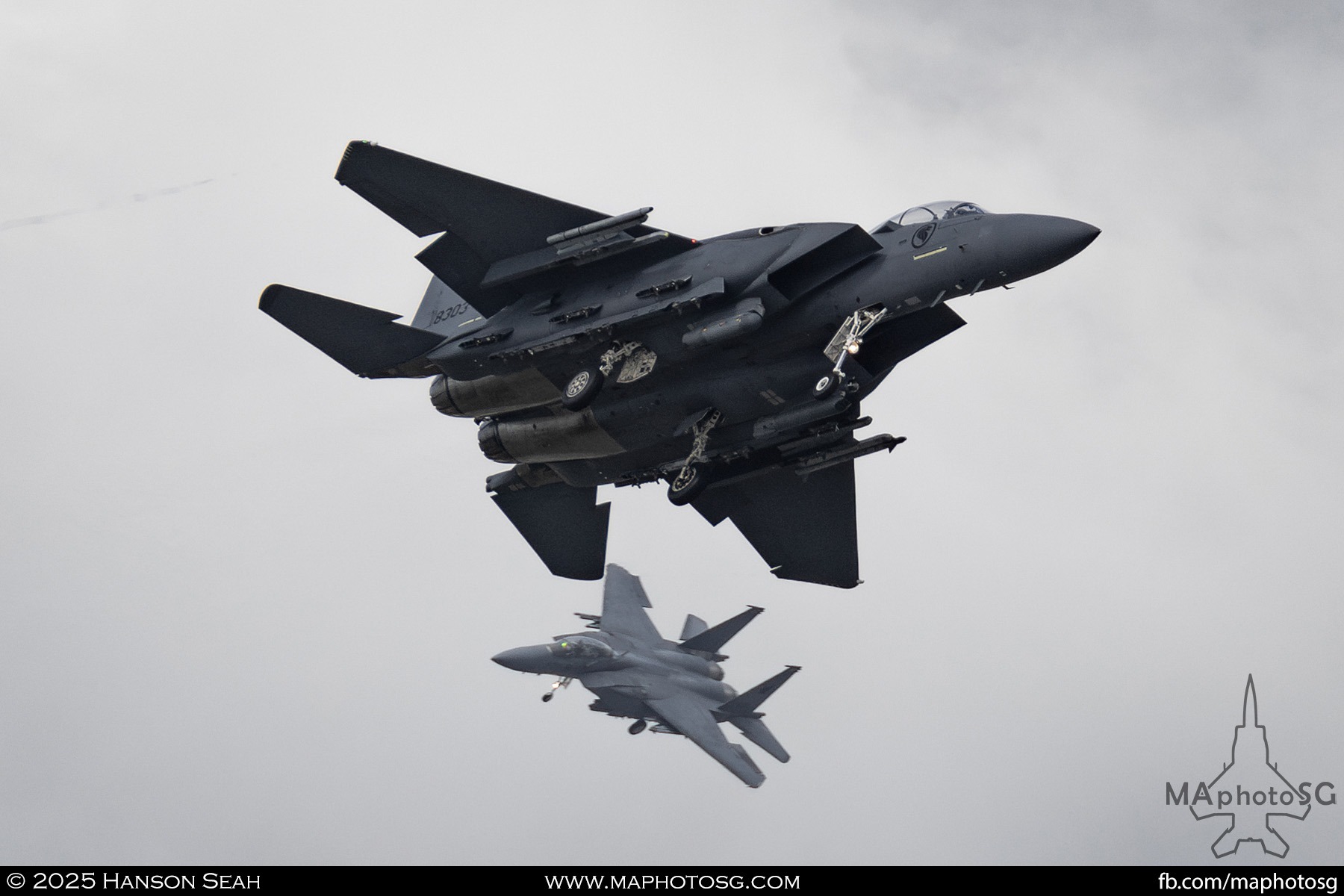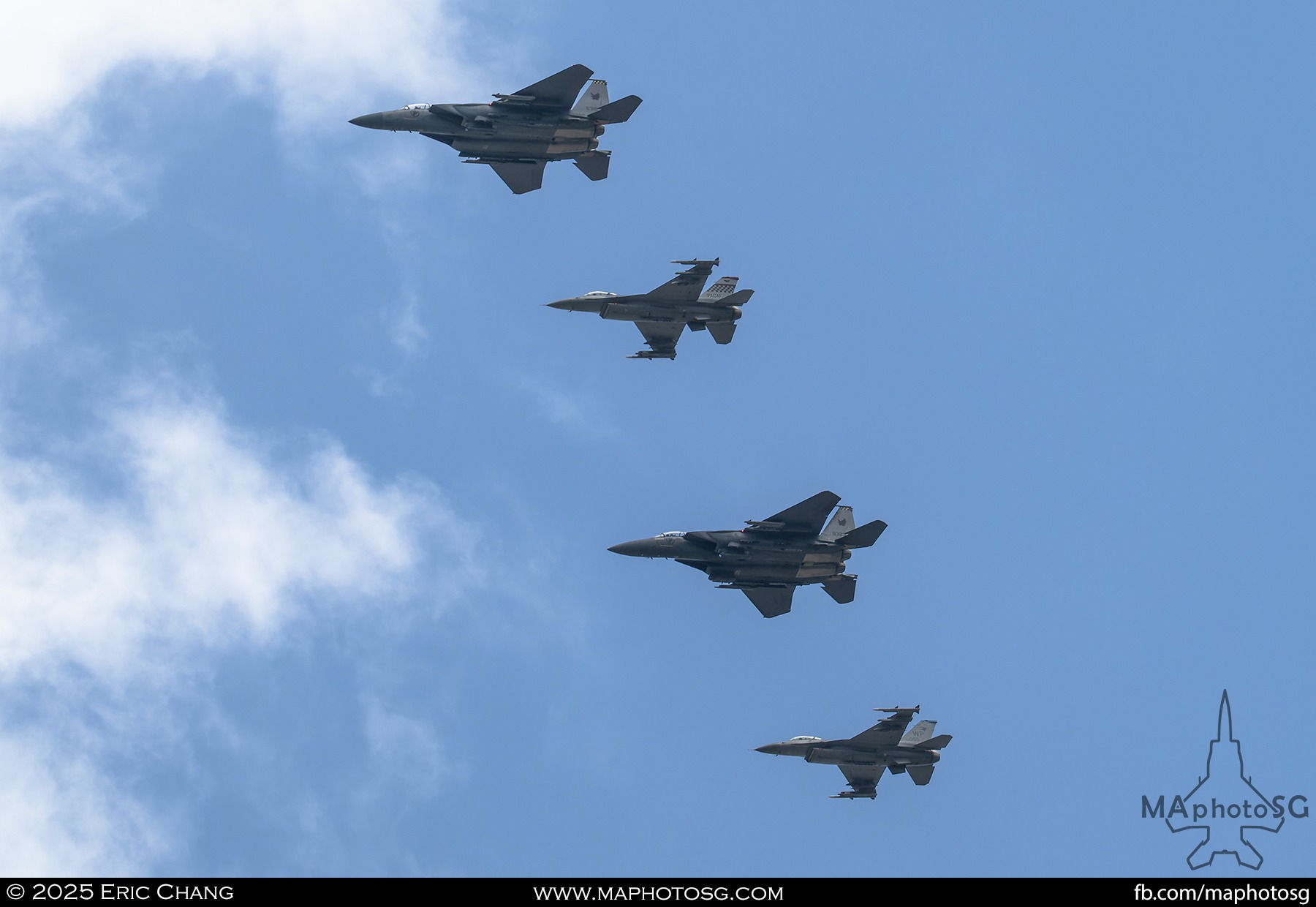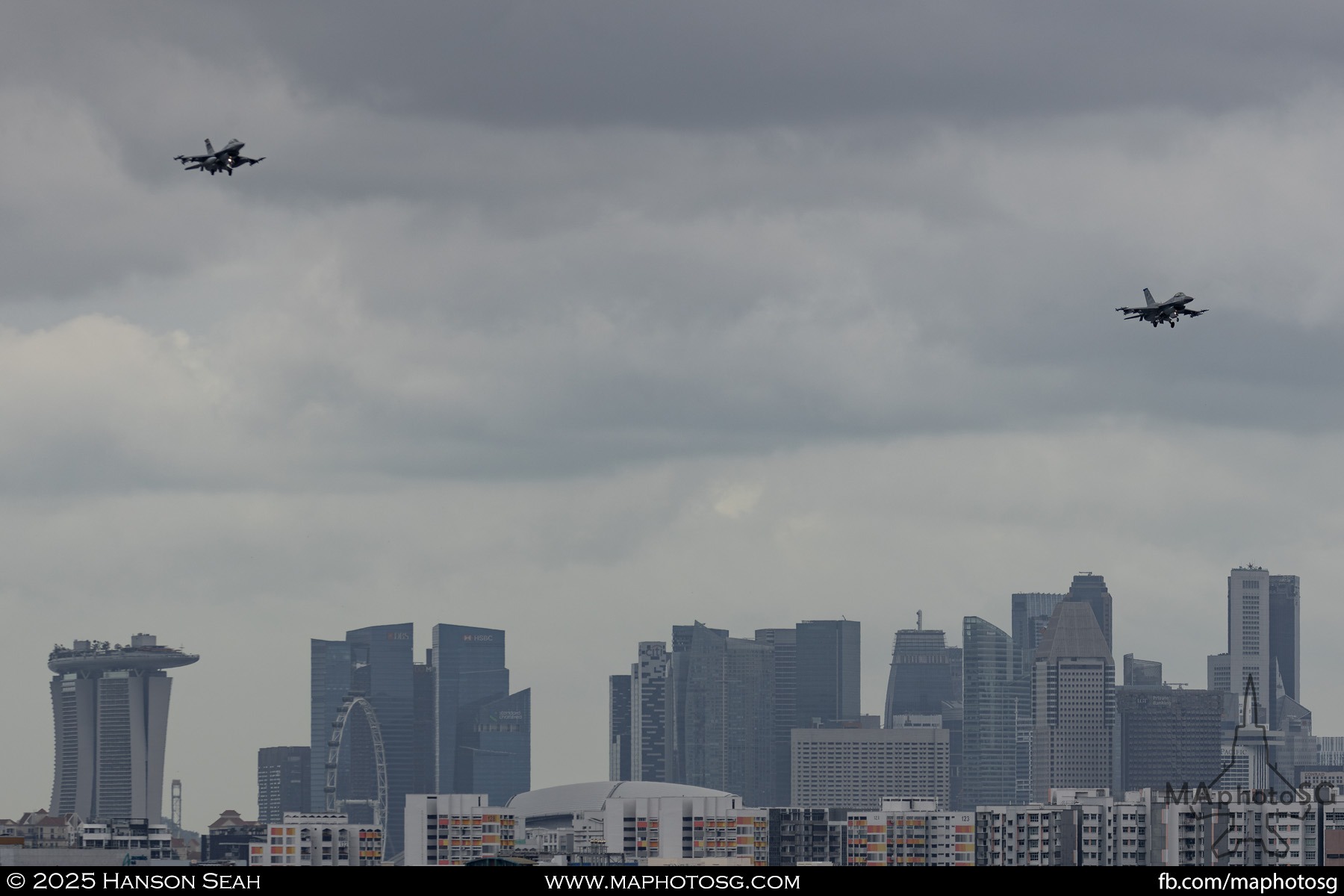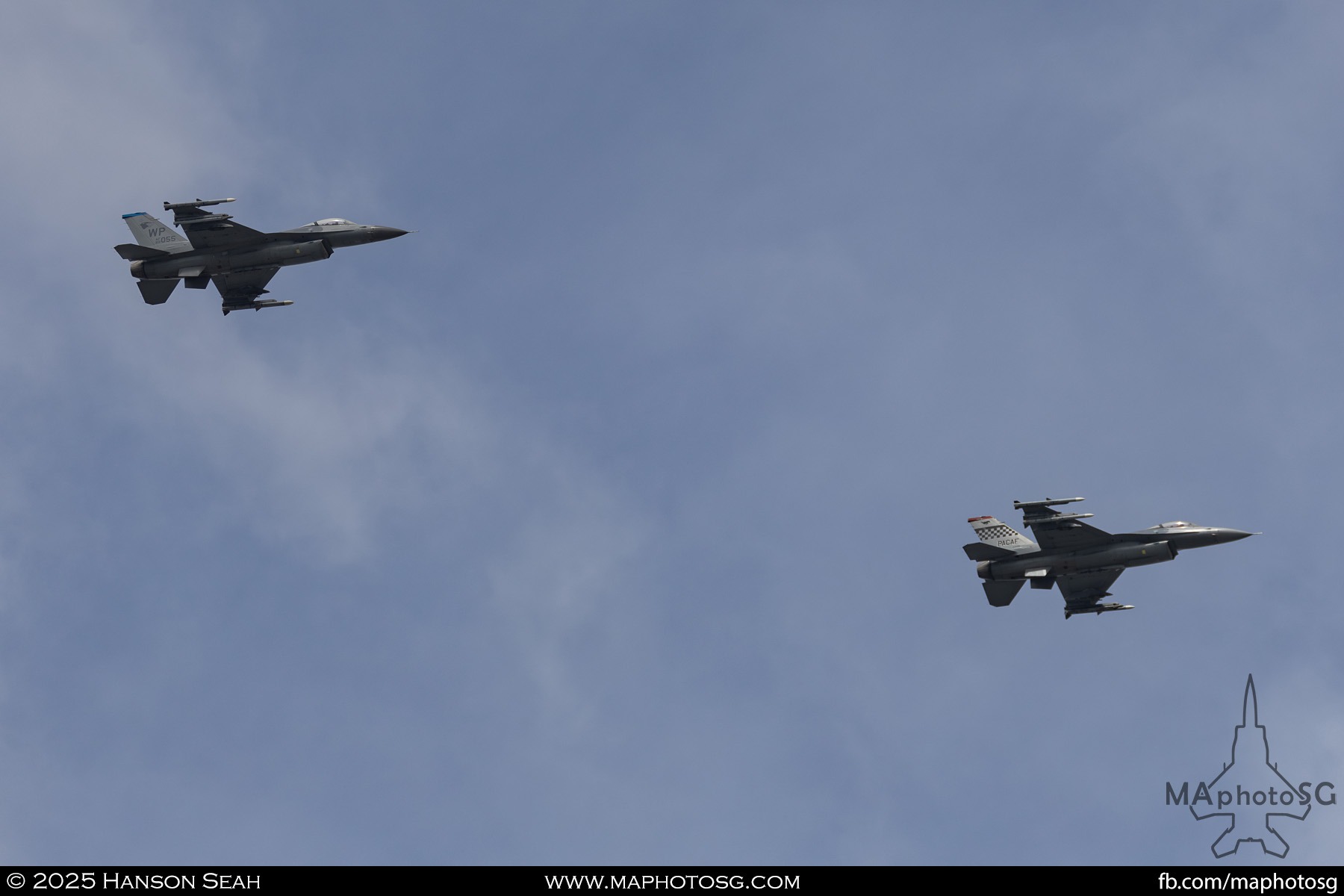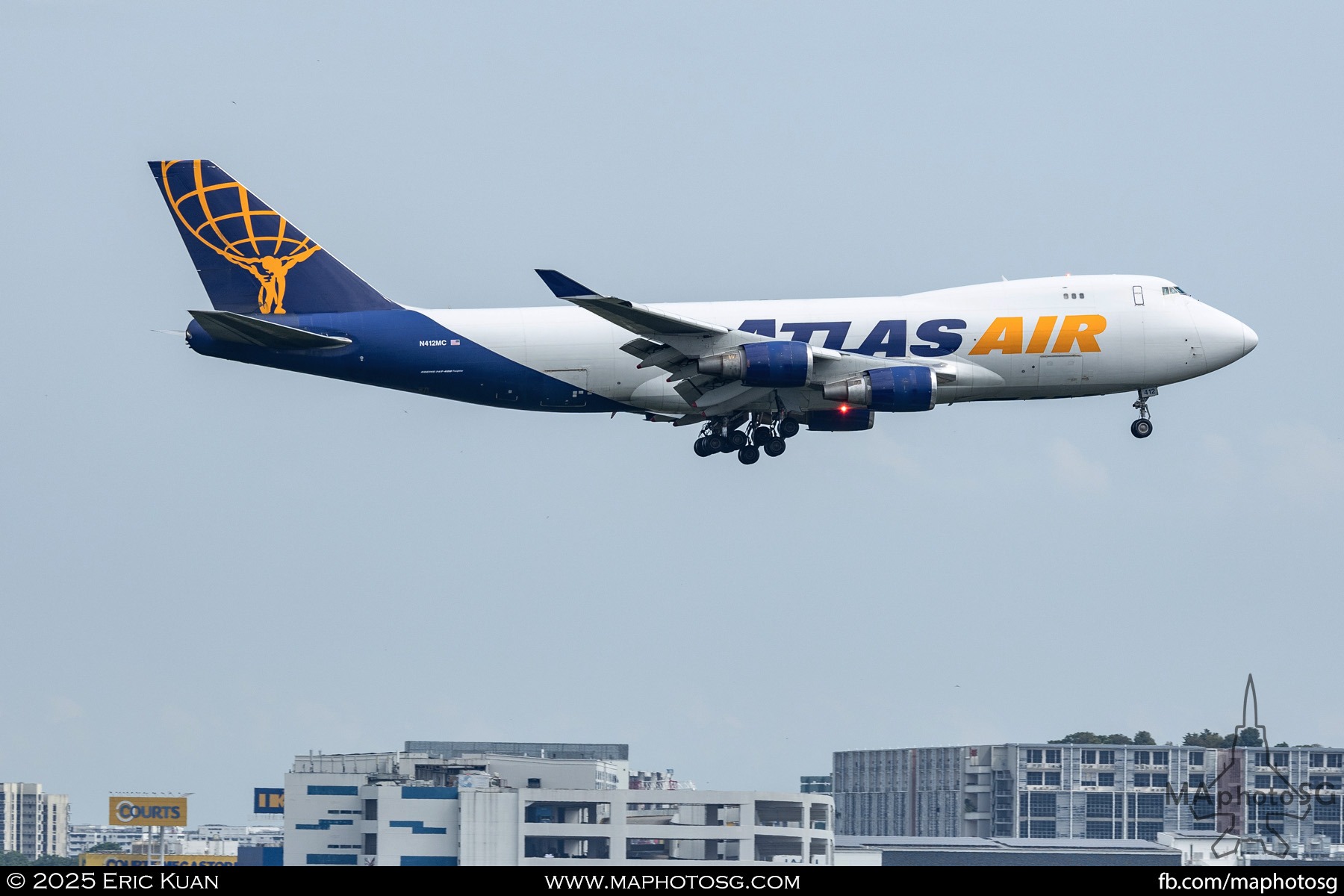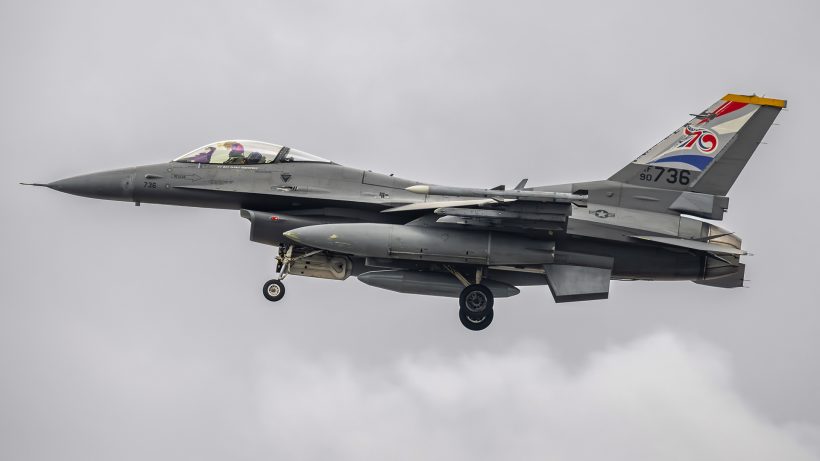NEWS | 13 IMAGES
PAYA LEBAR AIRBASE, SINGAPORE – 6 United States Air Force (USAF) F-16C operated by the 36th Fighter Squadron arrived on 2 January 2025 for Commando Sling 25 (CS25-1, XCS 2025). The three-week aerial combat exercise underscores the commitment of the United States and Singapore to enhance interoperability amidst the U.S. leadership transition. Notably, 36th Fighter Squadron is being deployed under the “Super Squadron” concept, which involves drafting fighters across the Seventh Air Force to maximise combat effectiveness.
Commando Sling
Commando Sling is a Pacific Air Forces (PACAF) sponsored bilateral exercise with the Republic of Singapore Air Force (RSAF), “designed to increase interoperability and improve alliance capability” through Dissimilar Air Combat Training (DACT). Its inception can be linked to the 1990 Memorandum of Understanding Regarding United States Use of Facilities in Singapore. Recent trends have seen Commando Sling conducted once a year. The previous Commando Sling was held in November 2023, also featuring the 36th Fighter Squadron.
“Super Squadron”
The CS25-1 participation comes at a time when the 36th Fighter Squadron is in the midst of a year-long “Super Squadron” trial.
In July 2024, the Seventh Air Force started a temporary shift in U.S. F-16 placements in South Korea to optimize combat capability and readiness for the ROK-U.S. Alliance and the Indo-Pacific region. A total of nine F-16s were reassigned from the 35th and 80th Fighter Squadrons in Kunsan Air Base to the 36th Fighter Squadron (36 FS) in Osan Air Base. This boosted 36 FS’s fleet from 22 to 31 aircraft, forming a “Super Squadron”. Approximately 150 aircrew and support personnel were also transferred with the aircraft.
While the “Super Squadron” will be evaluated on sortie generation, maintenance, manpower and logistic requirements, a further participation in an overseas exercise will provide critical insights on ability to meet the operational priorities set by Pacific Air Forces (PACAF) Strategy 2030, particularly on advance basing posture to rapidly access the Indo-Pacific theatre while strengthening alliances and partnerships.

